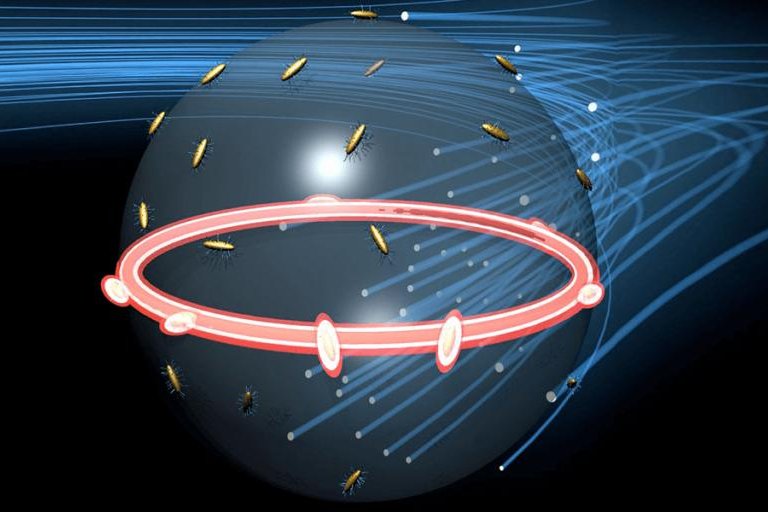An illustration shows a handful of tiny gold particles, or gold nanorods, attached to the surface of microlaser. Photo courtesy of Vinh Diep/USC
Oct. 6 (UPI) -- Scientists have boosted the efficiency of microlasers using tiny gold particles, thus expanding the technology's real-world application possibilities.
Researchers at the University of Southern California were able to create a tiny, energy-efficient frequency comb by attaching gold nanoparticles to the surface of a tiny laser.
Frequency combs create a rainbow of light frequencies from a single color. The technology is used in a variety of fields, but is most often employed as a sensor capable of measuring the spectral properties of tiny targets, like potentially harmful chemicals.
Today, the best commercial frequency combs are prohibitively expensive and require larges amounts of power, limiting their potential outside the lab. Scientists at USC were able to create a frequency comb with their gold-enhanced microlaser using only a few milliwatts of power.
The experiments -- detailed this week in the journal Photonics -- showcase the potential of a smaller, more mobile frequency comb.
"These results exemplify what can happen if researchers from different fields work together on a basic science problem that has applied research impact," Andrea Armani, a professor of engineering and materials science at USC, said in a news release. "By combining expertise in optics and in nanomaterials, we made exceptionally fast progress that challenged and disproved the conventional thought in the field that gold nanoparticles would be detrimental to the laser."
The gold nanorods work like little optical amplifiers, boosting the intensity of the microlaser's light.
"The higher-intensity light can then interact with organic molecules on the surface of the gold to generate other wavelengths of light," said Vinh Diep, a materials science PhD student. "This combined effect allows for the comb generation to begin at a much lower power than the traditional pulsed-laser approach."
With the addition of gold particles, the tiny laser can produce a large spectrum of frequencies, covering a wavelength range of 300 nanometers. Such a wide spectral range could make the device useful in chemical spectroscopy systems, like portable sensors used to detect explosives and dangerous gases.















